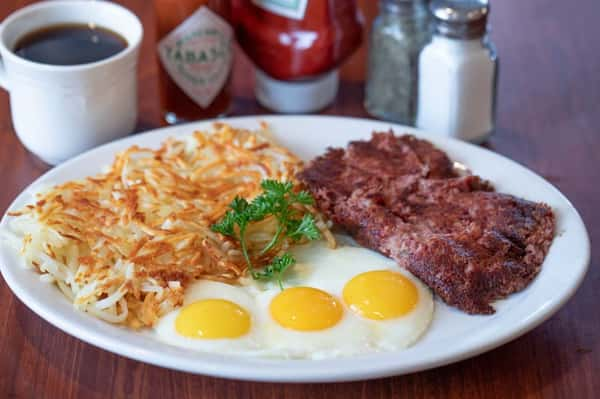
Machaca, or machacado in the northern regions, is a popular Mexican dish which incorporates dried beef, tomatoes, onions, eggs, and chili verde, often combined with a tortilla wrap and served with any number of toppings, side dishes, and accompanying sauces (such as guacamole). The carne seca is then shredded thin and mixed into the sauce to create a wholesome, beef dish. This is a tomato-based dish, which incorporates onions, eggs, chili verde, and occasionally potatoes. Of course, the most famous dish that carne seca is used to make is machaca (or machacado as it is called in the north). This perhaps resembles more closely the original intention for the meat, and has obvious ties to the prominent Mexican community and culture within the state. New Mexico is where the recipe differs somewhat, as the dried meat is eaten as a crispy snack, similar to potato chips or crispy bacon. The same can be said in California, where the proximity to both Arizona and northern Mexico has influenced a similar taste for carne seca, becoming a similarly popular filling for Mexican dishes.


In Arizona, carne seca is a popular dried meat filling used in and around Tucson, and is incorporated into enchiladas, tacos, and chimichangas, usually combined with eggs. Meaning “dried meat” in Spanish, carne seca is in essence the Mexican equivalent of beef jerky, and is a great savory snack in Mexican cuisine, one that is popular throughout South America and the south-western United States, where certain variations exist. The logical place to begin is with carne seca. Machaca & Carne Seca: What Are They?īoth beef dishes emanating from the northern regions of Mexico, machaca and carne seca are popular comfort foods that have become popular around the world. This included meat from domesticated animals (such as beef, pork, goat, chicken, and sheep), various dairy products (such as cheeses and milk), fruits and vegetables, rice, sugar, and olive oil.

Post-ConquestĪfter the Spanish came to the new world, they brought several methods of cooking, and different sources of food that were previously unknown or unavailable to the indigenous Mexicans. However, after around 1200 BCE, the implementation of corn into their diets meant that advances could be made to the way they ate and lived, including the refining of flour, and the creation of flatbreads and tortillas.Ĭomplementary proteins included beans and other plants, and other types of preferred meat included domesticated turkeys, iguanas, turtle eggs (only on the coastlines), and various types of insects, such as grasshoppers, beetles, and the lave of ants. In the Mesoamerican period, indigenous Mexicans hunted game and collected wild vegetables, including chili peppers, which they began to use in cooking.īefore the cultivation of corn, their main source of carbohydrates were the hearts of agave plants. However, there are two notable periods in the history, and these can be defined as pre and post-Spanish invasion. Mexican Cuisine: A HistoryĪs far as Mexican cuisine is concerned, its history can be traced back to the Mesoamerican period beginning from 7200 BCE. Machaca and carne seca are fan favorites, and whilst fairly similar, there are some notable differences.


 0 kommentar(er)
0 kommentar(er)
